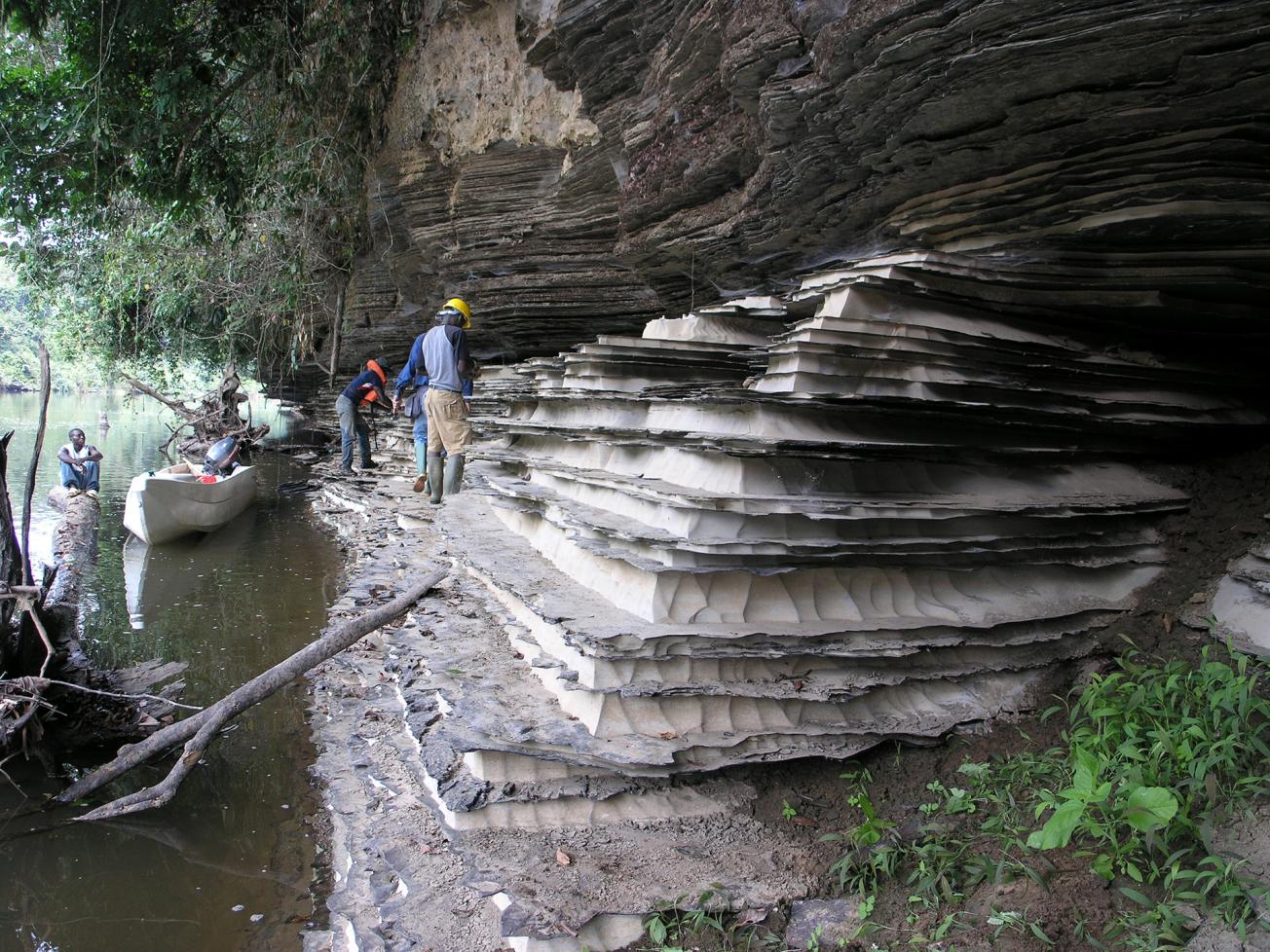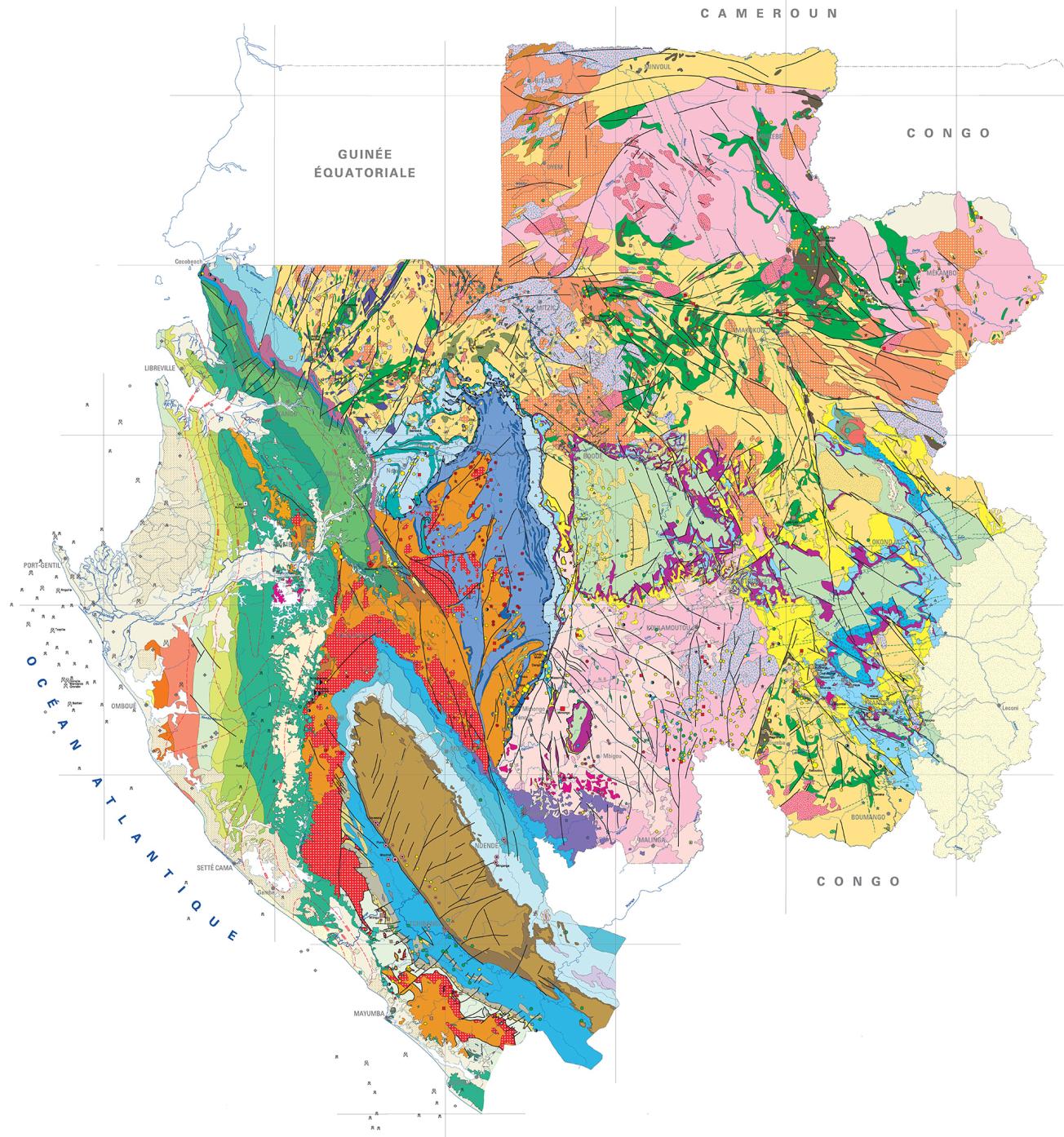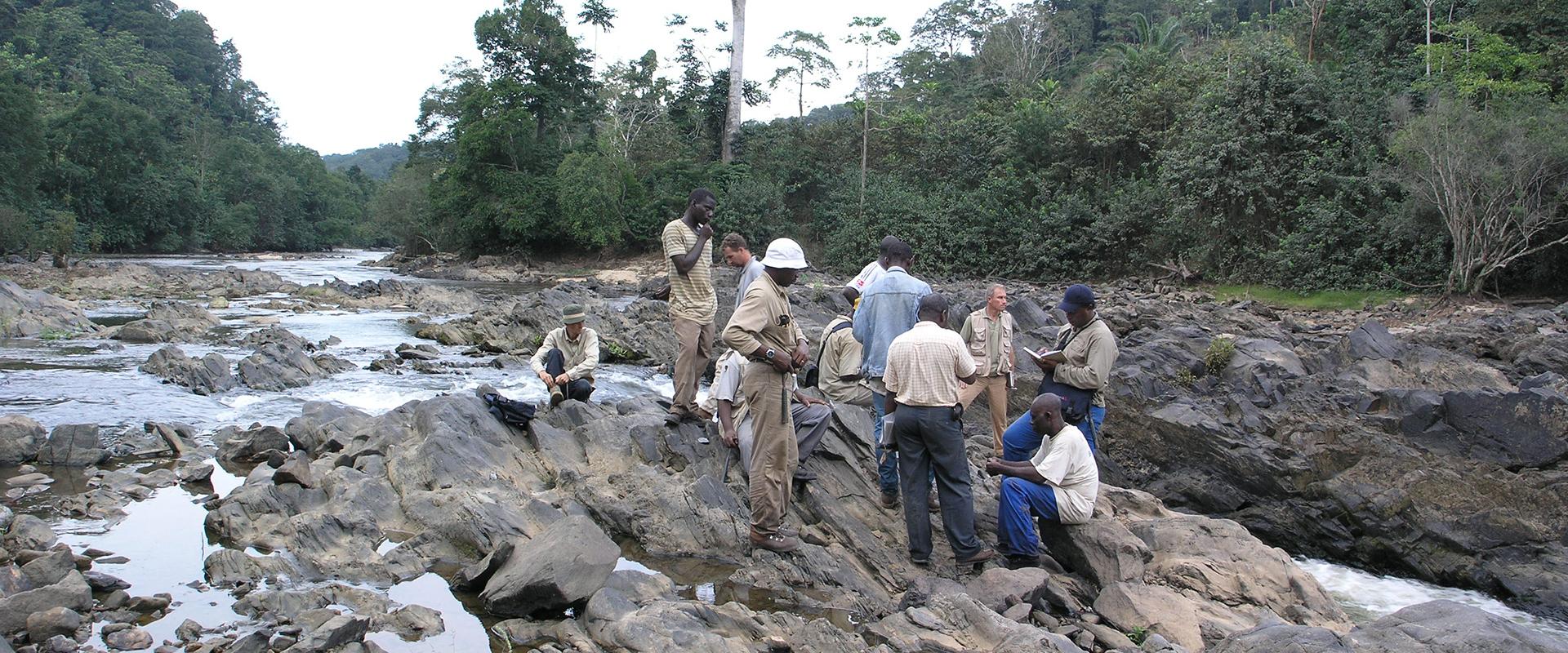
Geological prospecting in Gabon. Here, an outcrop of Neoproterozoic dolomite along the Ngounié River.
© BRGM - D. Thiéblemont
In order to provide Gabon with a reliable geological and mining database, the BRGM operated in the framework of Sysmin (the 8th European Development Fund), presiding an international consortium, with The Council for Geosciences (South Africa), the Musée Royal de l'Afrique Centrale (Belgium), and Sander Geophysics (Canada).
A reliable geological and mining database
The four-segment project included a mining inventory covering nearly 10% of the territory. Seven carefully selected zones were the focus for a “wide-mesh” strategic survey which resulted in procuring and analyzing 25,000 samples. Forty-one targets were then selected for tactical exploration, with soil sampling using a 200 x 200 m grid” In the end, thirty-eight promising sites were identified, essentially for gold.

The 3rd edition of the 1:1,000,000 geological map of the Gabonese Republic.
© BRGM
The Gabonese geological map
A second important component concerned the geological map, aiming to achieve a 1:200,000 scale coverage for half the territory. This effort enabled ten maps to be drafted, completed by a national synthesis at 1:1,000,000 scale that integrates mineral resources. A rock collection containing 6000 samples was also constituted. Geological mapping benefited from airborne geophysics and included reprocessed data from a 1982 survey covering the whole of Gabon in addition to newly acquired information.
Lastly, a map indicating resources of industrial materials and minerals was prepared, for Gabon suffers supply problems for sand and cement.
All these data, stored and made use of within a geographical information system, are managed today by Gabonese geologists, who are closely involved in the setup of the computer infrastructure and trained to run it on a long-term basis.







